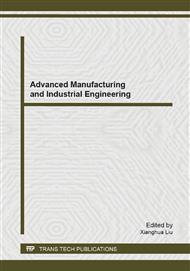p.78
p.83
p.88
p.93
p.101
p.107
p.112
p.115
p.121
The Application in Calculation of the Horizontal Wells’ True Thicknesses – An Example of Penglaiba Formation in the Northern Tarim Basin
Abstract:
Horizontal oil and gas drilling has become one of the most valuable technologies ever introduced in the unconventional drilling especially. Nevertheless, it is complex to calculate the horizontal wells’ true formation thicknesses in the dipping strata. Combined with the actual geological conditions and mathematical methods, a complete set of new formula was derived from the basic data of the strata dips, dip directions and individual layer data to calculate the true formation thicknesses, which could obtain the horizontal wells’ true thicknesses of Penglaiba Formation of Lower Ordovician in the northern Tarim Basin. And the calculation results were accurate. Calculated with this formula, the Penglaiba Formation’s true thickness was given, wells’ relative distributions were located, and the columnar section of Penglaiba Formation was spliced to discover the geological situation subsurface accurately. The columnar section of Penglaiba Formation in the northern Tarim Basin could provide a theoretical basis for reservoir prediction and the distributions in the low permeable beds. This is the key technical method to descript the palaeogeologic map.
Info:
Periodical:
Pages:
101-106
Citation:
Online since:
August 2014
Authors:
Price:
Сopyright:
© 2014 Trans Tech Publications Ltd. All Rights Reserved
Share:
Citation:


